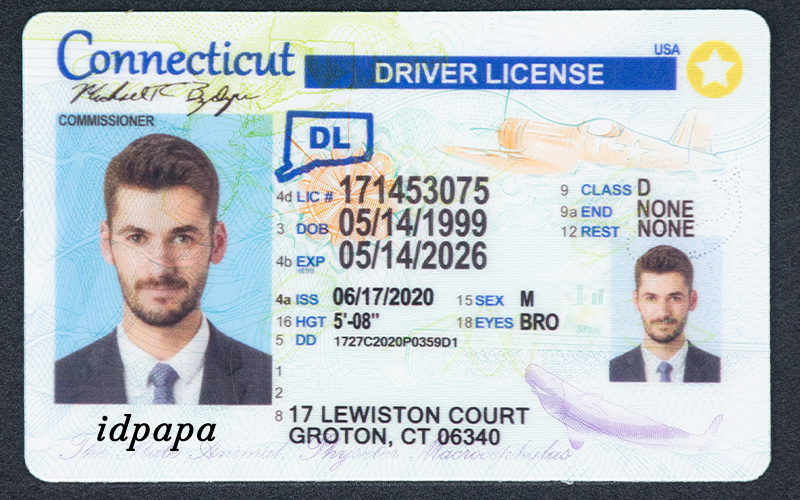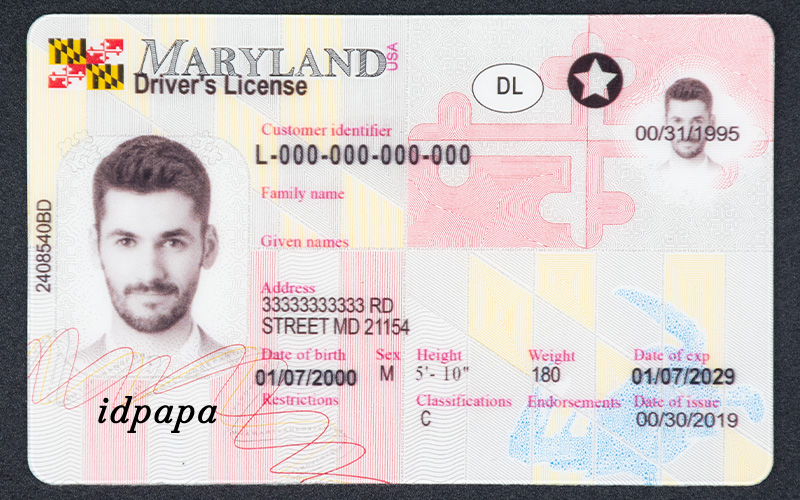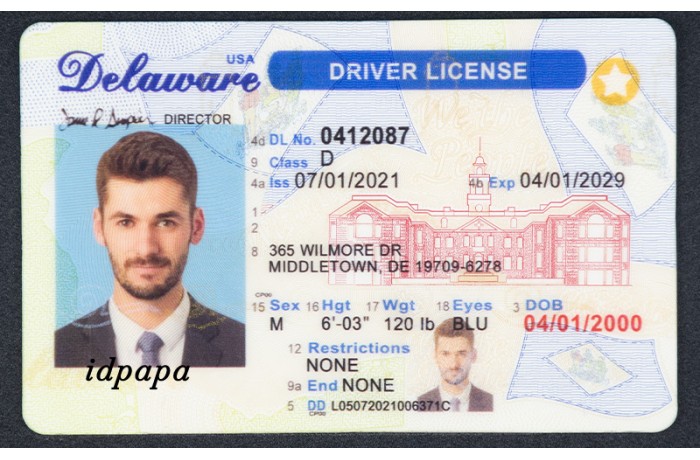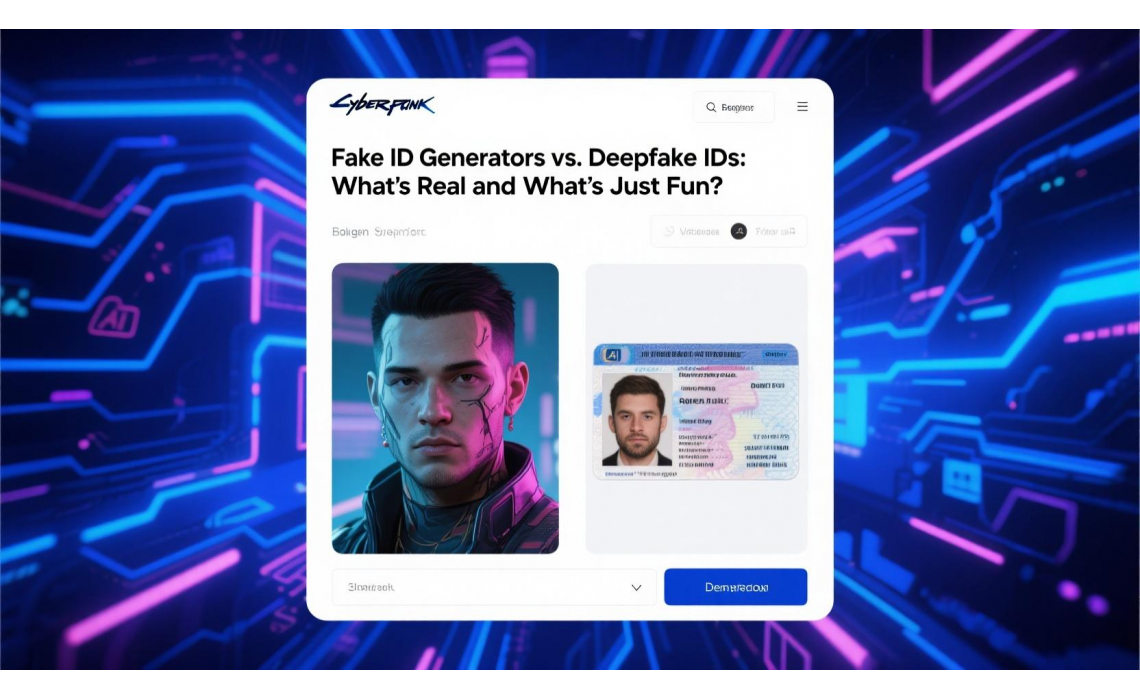Fake ID Generators vs. Deepfake IDs: What’s Real and What’s Just Fun?
Fake ID Generators vs. Deepfake IDs: What’s Real and What’s Just Fun?

In 2025, technology is blurring the boundaries between reality, performance, and identity. On one end of the spectrum, fake ID blog generators are being used to create funny, customized novelty cards for parties, skits, and social media trends. These tools are widely accessible and allow users to generate entertaining alter egos, silly job titles, and hilarious role-play credentials that are perfect for personal use and online humor. They’ve become a staple at themed parties, corporate retreats, and TikTok trends—where showing off your “Certified Meme Director” or “Emotional Support DJ” badge earns laughs and likes. These novelty tools aren’t meant to deceive anyone—they’re made for expression, satire, and fun.
On the other hand, deepfake IDs are raising eyebrows across the tech and legal communities. These advanced, AI-powered forgeries closely mimic real government-issued documents, and they’re causing real-world consequences. Unlike their novelty counterparts, deepfake IDs are crafted with the intent to impersonate real individuals or bypass security systems. They often include digitally altered faces, fraudulent personal data, and security features designed to fool even biometric verification software. Both trends are rooted in the rise of AI creativity and customization. But while fake ID generators are mostly harmless and used for entertainment, deepfake IDs venture into ethically murky and often illegal territory. Let’s explore the difference between what’s just a joke and what’s genuinely dangerous.
The Fun Side: Fake ID Generators for Parties, Skits, and TikTok
Fake ID generators are web tools and platforms designed for entertainment, creativity, and social fun. Whether it’s a birthday bash, a cosplay convention, or a remote office party, these tools allow users to dream up their own outrageous identities. You can become a “Professional Snack Tester,” “Dragon Whisperer,” or “Director of Unicorn Affairs” in seconds.
These novelty IDs are usually created using platforms like IDPapa, OnlyFake, or simple design tools like Canva, where users can
●Invent quirky names or job titles
●Add real or AI-generated avatars
●Select playful templates styled like passports, badges, or licenses
●Download or print the card for personal use
The intent is obvious: to be funny, fictional, and fake in a way that nobody would mistake for real documentation. Most novelty ID tools even stamp disclaimers on the cards, making it clear they’re not valid identification. They are party props, TikTok skit accessories, or creative icebreakers in team-building games—not tools for impersonation or deception.

The Risky Side: Deepfake IDs That Mimic Reality
Now contrast that with deepfake IDs—a more concerning trend where AI is used to generate hyper-realistic replicas of actual identification documents, such as driver’s licenses, national IDs, and even passports. These aren’t funny badges or playful event props; they are digital forgeries built to mislead systems, institutions, and people. Unlike novelty IDs meant for laughs, deepfake IDs are built for deception. These forgeries often include fake holograms, barcodes, watermarks, and even facial images altered using AI to match biometric verification systems. The intent is clear: to appear real enough to fool machines and humans alike.
Such tools are being used to bypass KYC (Know Your Customer) processes on crypto exchanges, create fraudulent accounts, or gain access to age-restricted platforms. Deepfake IDs have shown up in identity theft cases, online banking fraud, and even cross-border scams. The consequences are serious—these aren’t harmless pranks but calculated acts of deception that can lead to financial theft, data breaches, and criminal activity across multiple jurisdictions. As digital transactions become more prevalent, the opportunity for misuse continues to expand, making these tools a growing concern for cybersecurity experts and regulators worldwide.
These aren’t created on harmless DIY platforms—they’re often sold on the dark web or through underground AI toolkits marketed for illegal purposes. The sellers of these tools often advertise them as "indistinguishable from real IDs" and boast about how they can beat facial recognition systems or document checks. And their quality is alarmingly convincing, making them a challenge for even trained security teams to detect. This level of realism, powered by machine learning and deep generative networks, puts deepfake IDs in an entirely different category from fun, user-made novelty badges.
The key difference here lies in intent. Fake ID generators are used for fun and fantasy; deepfake IDs are used to manipulate real-world systems, making them dangerous and illegal. One celebrates creativity; the other exploits technology. While novelty IDs exist to entertain and inspire imagination, deepfake IDs are a misuse of innovation designed to impersonate, defraud, and deceive. And as AI capabilities continue to evolve, that line between play and crime will only grow more important to recognize.

Why Understanding the Difference Matters
In a world where digital identities are fluid and editable, it’s crucial to recognize the purpose behind the tool. As technology evolves, so does our ability to create personalized digital artifacts—and that includes IDs. If you're printing an “Emotional Support DJ” badge for your friend’s bachelorette party, you're in the clear. That’s creativity, humor, and a touch of personal flair coming together to enhance a memorable experience. But if you're forging a driver’s license to fool airport security, you're in serious trouble. The difference lies not just in the output, but in the intended use, and that distinction can mean the difference between a party favor and a felony.
Fake ID generators are safe when used responsibly: they’re great for character-building in a skit, hilarious titles at an event, or joke credentials for a remote team meeting. These tools have become popular in TikTok trends, workplace bonding games, and cosplay conventions, where having a silly or creative ID can elevate the fun and break the ice. They’re meant to entertain, provoke laughter, and inspire imagination. They don’t try to look exactly like real IDs, and they rarely reference real government design elements. Their design is fictional—sometimes exaggerated to the point of absurdity—which keeps them in the safe territory of parody and novelty.
But the moment you cross into territory that involves impersonating someone else, accessing protected services, or deceiving official systems, you’re no longer in the realm of novelty—you’re stepping into criminal behavior. Attempting to mimic real IDs with the intent to mislead businesses, governments, or digital platforms opens the door to fraud and identity crimes. It’s not about the tool itself—it’s about how it’s used. That’s why understanding the difference is so important, especially in an age where AI makes both creation and deception more accessible than ever before.

Final Thoughts: The Creative and the Criminal
2025 has made it easier than ever to create and play with identity. With AI tools at our fingertips, we can invent roles, craft badges, and participate in global trends like the #FakeIDChallenge. But the same tools that spark joy in one context can spark danger in another.
So if you’re designing a badge that reads “Department of Snack Oversight” for your TikTok, go for it. Laugh. Post. Share. But if you aim to fool a real system or impersonate an actual person, you’ve crossed a line.
In the end, the question isn’t just “Is it a fake ID?”


